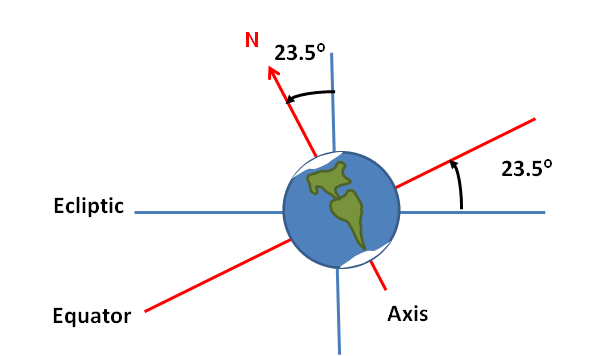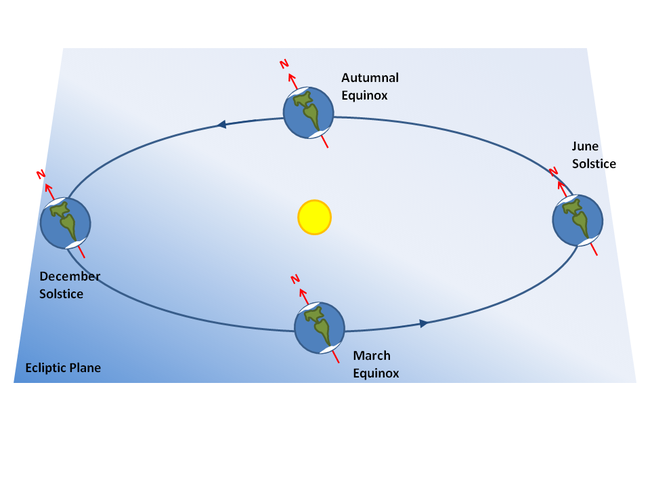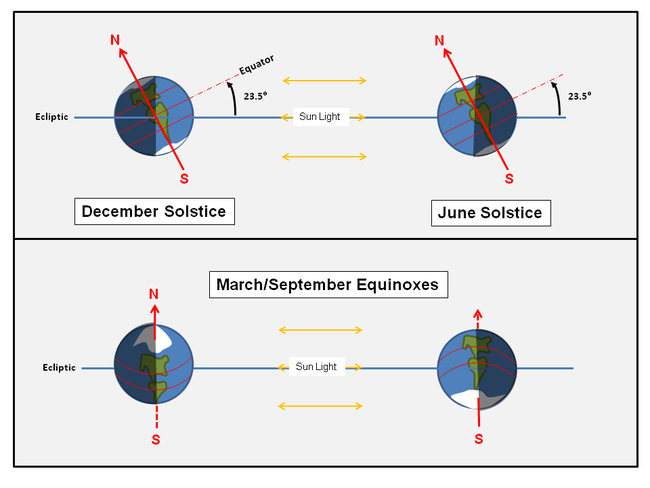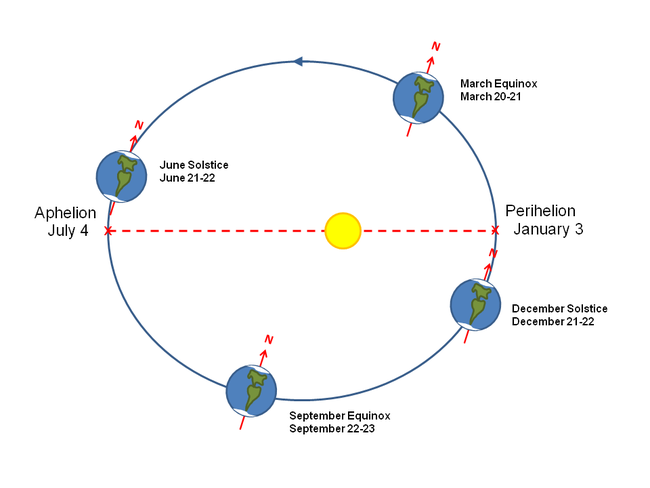Distant Nature: Astronomy Exercises
Objectives
In this exercise, you will observe the Earth in its orbit around the Sun and the changes in the Earth's orientation to the Sun as it changes over time. Also you will observe how the changes in the Earth's orientation causes the seasons. This includes the solstices and the equinoxes.
Equipment/Materials Needed
Stellarium, calculator.
Subject Introduction
The Ecliptic plane is the plane defined by the Earth's orbit about the Sun. The Earth's axis is not at right angles to Ecliptic plane, but is inclined at an angle of approximately 23.5° from perpendicular. Figure 1. shows a view along the Ecliptic plane with the Earth tilted to display the obliquity of the Ecliptic (23.5°).
Earth's Axis Tilt (The Obliquity of the Ecliptic)

Earth's Tilted Axis
Figure 1.
As the Earth orbits the Sun, the angle of tilt stays the same and the axis points to the same point in the sky (north points toward the North Star). During the orbit, the axis (N) is tilted toward the Sun, away from the Sun, or in two positions, is perpendicular to the line from the Sun to the Earth. Figure 2. shows these four important points.
- June solstice
- N tilted toward the Sun
- Summer Solstice in the Northern hemisphere
- September equinox
- Axis perpendicular to the Earth/Sun line
- Autumnal Equinox in the Northern hemisphere
- December solstice
- N tilted away from the Sun
- Winter Solstice in the Northern hemisphere
- March equinox.
- Axis perpendicular to the Earth/Sun line
- Vernal Equinox in the Northern hemisphere
Simplified View of the Earth's Orbit and the Seasons

Earth's Orbit and the Seasons
Figure 2.
Figure 3. shows the angle of the Sun to the Earth at each solstice/equinox. Notice the latitude lines and how the angle of the Sun's rays changes for any given location on Earth.

Sunlight Angle by Season
Figure 3.
A more accurate view includes the fact that the Earth's orbit is not circular, but elliptical, with the Sun at one of the foci. This means that the distance between the Sun and the Earth changes slightly over time. Also, the exact date and time for the equinoxes and solstices vary within a narrow range. This can be seen in Figure 4.
Elliptical orbit of the Earth and the Seasons

Earth's Elliptical Orbit
Figure 4.
The combination of the Earth's orbit (elliptical) and the tilt varying with respect to the Earth/Sun line is the reason for the annual changes in climate and explains the change in the maximum height of the Sun above the horizon over the course of a year. The duration and intensity of radiation, including sun light, received at each point on the Earth's surface is the main reason for the seasons.